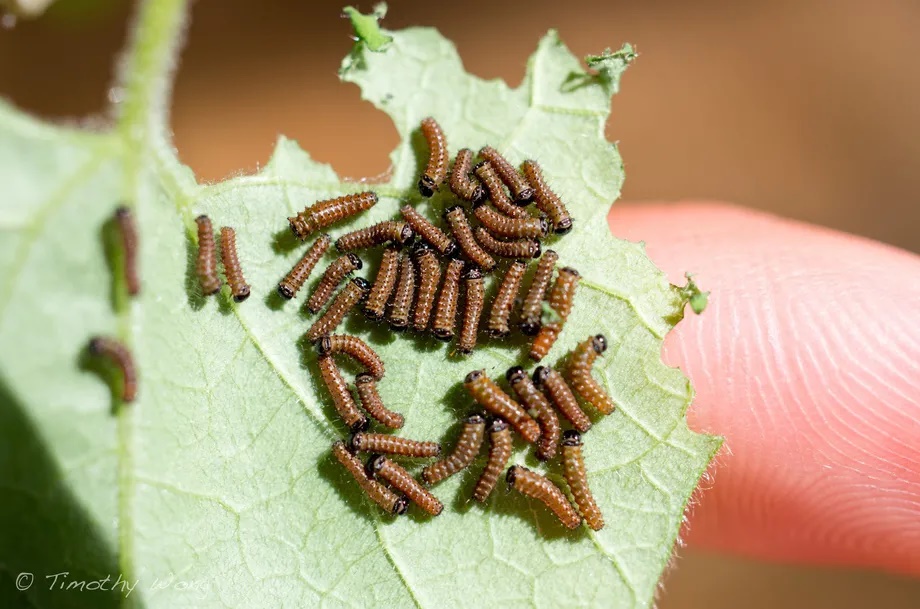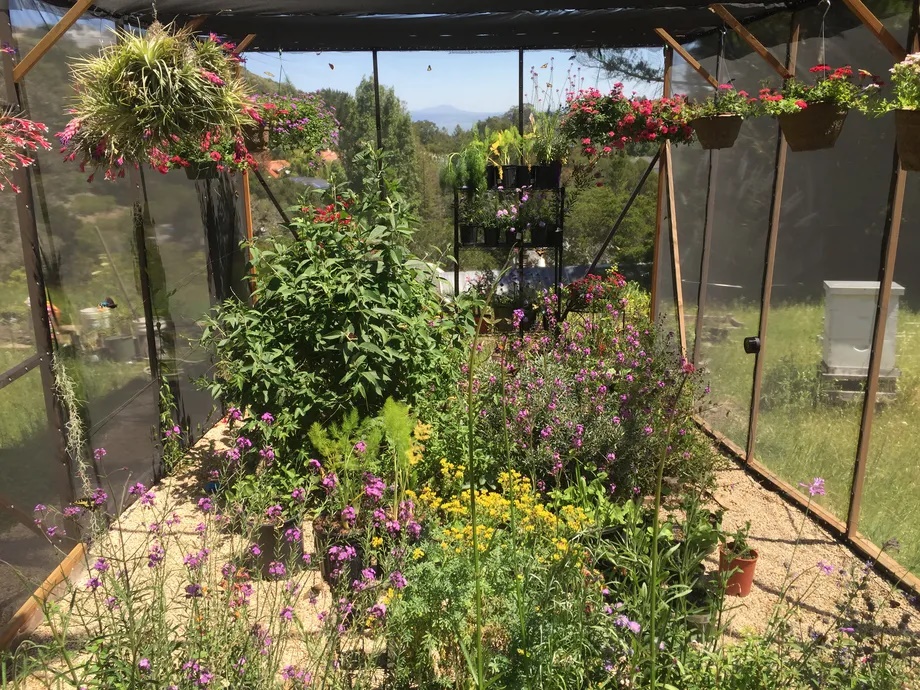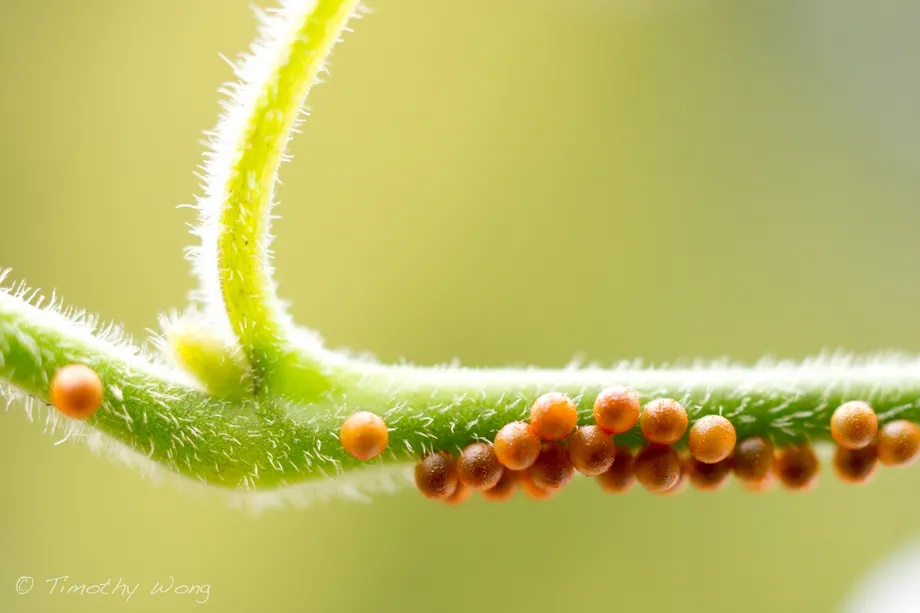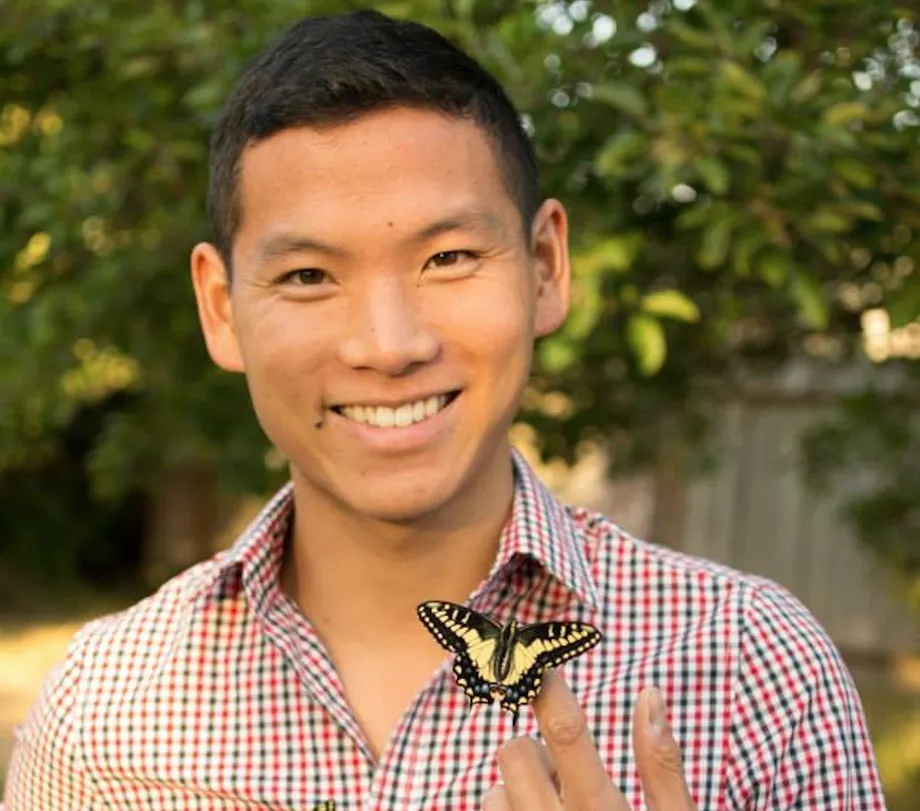The California pipevine swallowtail butterfly is a wonder to behold.
It begins its life as a tiny red egg, hatches into an enormous orange-speckled caterpillar, and then — after a gestation period of up to two years — emerges as an iridescent blue beauty. Brimming with oceanic tones, the creature’s wings are considered by collectors to be some of the most magnificent in North America.

For centuries, the California pipevine swallowtail — or, Battus philenor hirsuta — called San Francisco home. As development increased in the early 20th century, the butterfly slowly began to disappear. Today it is a rare sight.
But one man’s DIY efforts are starting to bring the butterfly back.
His story reminds us that we can all contribute to conservation efforts — sometimes even from our own backyards.

As an aquatic biologist at the California Academy of Sciences, Tim Wong rarely has a dull day.
Whether he’s hanging out with an albino alligator, swimming with Javanese stingrays, or treating a hungry octopus to a hamster ball full of shrimp, Wong is constantly caring for one of the science museum’s 38,000 animals.
But outside of work, the 28-year-old devotes the bulk of his free time to raising butterflies, a hobby he picked up as a kid.
“I first was inspired to raise butterflies when I was in elementary school,” Wong says. “We raised painted lady butterflies in the classroom, and I was amazed at the complete metamorphosis from caterpillar to adult.”
In an open meadow near his home, Wong spent his days catching, studying, and raising any butterflies he could find.
Years later, he learned about the pipevine swallowtail — which had become increasingly rare in San Francisco — and he made it his personal mission to bring the butterfly back.

He researched the butterfly and learned that when in caterpillar form, it only feeds on one plant: the California pipevine (Aristolochia californica), an equivalently rare flora in the city.
“Finally, I was able to find this plant in the San Francisco Botanical Garden [in Golden Gate Park],” Wong says. “And they allowed me to take a few clippings of the plant.”
Then in his own backyard, using self-taught techniques, he created a butterfly paradise.
“[I built] a large screen enclosure to protect the butterflies and to allow them to mate under outdoor environmental conditions — natural sun, airflow, temp fluctuations,” he says.
“The specialized enclosure protects the butterflies from some predators, increases mating opportunities, and serves as a study environment to better understand the criteria female butterflies are looking for in their ideal host plant.”

Though the California pipevine butterfly had nearly disappeared in San Francisco, it was still common outside the city, in places with more vegetation. With permission, Wong was able to source an initial group of 20 caterpillars from private residences.
He carefully transported them to his backyard and set them loose on the plants to feed.
“They feed as a little army,” he says. “They roam around the pipevine plant from leaf to leaf, munching on it as a group.”

Once situated, the caterpillars began their long, drawn-out process of maturation.
After about 3-4 weeks, a caterpillar pupates and forms a chrysalis (or outer shell). The insect liquifies itself inside, and either develops into a into butterfly in about two weeks, or stays dormant for up to two years (this delayed development is called “diapause”).
“It’s like a long hibernation,” says Wong. “And when it’s over, they emerge as adult butterflies.”





